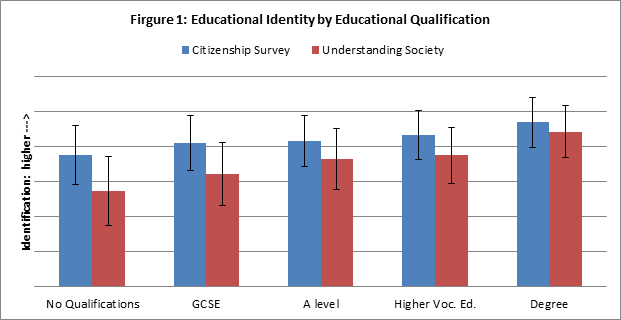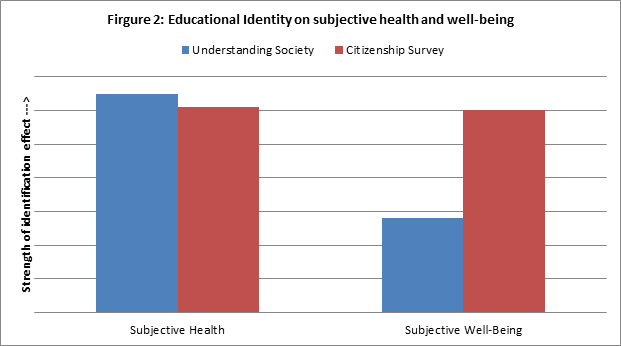Being a member of and identifying with a group that has a positive social identity are associated with a range of positive outcomes, including increases in well-being and resilience, and decreases in intergroup conflict and aggression. Along with recent research indicating that people can form social identities around their level of education, this suggests that forming social identities may provide a buffer for those with low levels of education against the negative consequences associated with their low status position (see Strand One).
However, as we outlined in the overview, forming a positive social identity for those with low levels of education is likely to be difficult. We expected, therefore, that people’s level of education would be a more important part of their identity if they had higher levels of education, which we investigated using data from the Understanding Society and Citizenship Surveys.

We found that, although education was more important to people’s identities as their level of education increased, it was somewhat important across all levels of education, including those with no educational qualifications (Figure 1).
Next, we investigated the buffering potential of identity: does forming a social identity around one’s level of education increase well-being and positive social attitudes, and potentially counteract some of the negative consequences associated with low levels of education (see Strand One)? Supporting our predictions, we found that identifying with one’s level of education was positively related to well-being (Figure 2) and decreased negative social attitudes.

We also found some evidence suggesting that identifying with your educational group provides the greatest benefits for those who had the lowest levels of education, especially in regard to increasing political engagement. This implies that it is particularly important for those with low levels of education to form an identity based on their level of education. However, the analyses we conducted in Strand Three suggests that this is not the full story.

